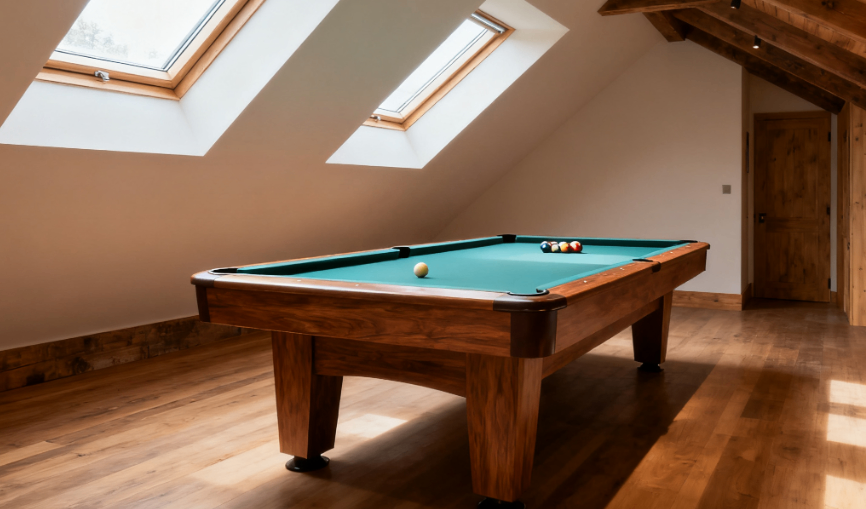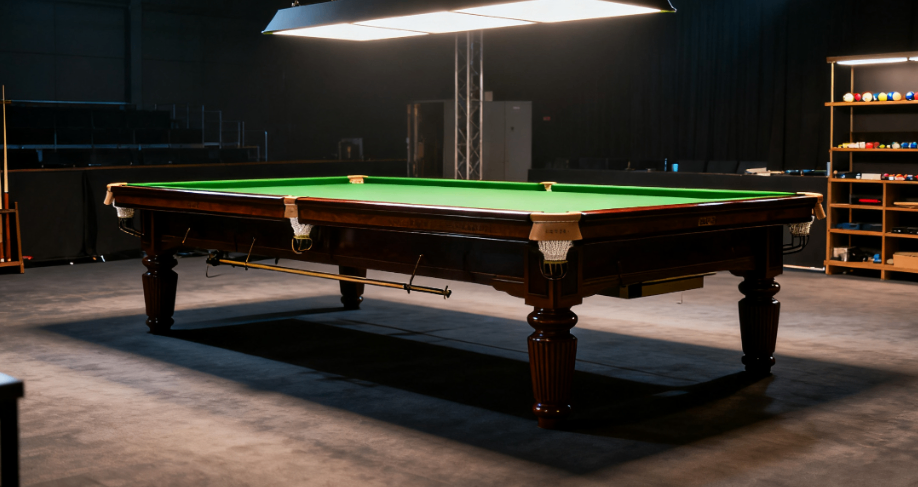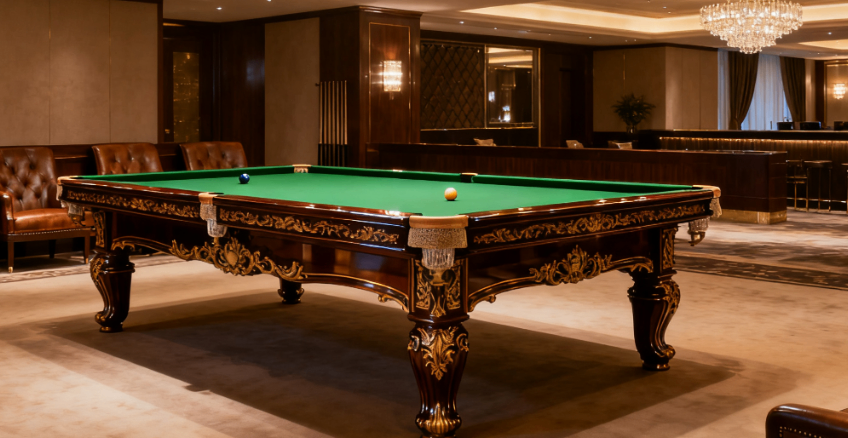For pool enthusiasts, finding the right table starts with size. From there, consider the type of table, your playing style, and the space you have available. Standard pool tables come in several variations depending on the game: snooker tables are the largest, Chinese 8-ball tables fall in the middle, and American 8-ball or 9-ball tables are the most compact. While table sizes vary, the height is fairly standardized, designed to naturally suit an adult playing stance.
When choosing a table, don’t just chase “official” dimensions—think about how and where you’ll be using it. For casual home entertainment, a smaller or mini table is often ideal. For professional practice or competitions, tables that match regulation sizes are the better choice.

I. Standard Pool Table Dimensions
Table size is one of the most important factors, as it affects both gameplay and the spectator experience.
Snooker tables are the largest, typically around 385 cm long and 180 cm wide (12 ft x 6 ft playing area). The size allows for precise positional play, spin shots, and tactical depth—hallmarks of snooker’s elegance and difficulty.
American pool tables (used for 8-ball and 9-ball) are more compact, usually 280–290 cm long and 150–160 cm wide (9 ft x 4.5 ft). This size supports faster-paced play and dynamic shot-making, making it a popular choice for both competition and home use.
Chinese 8-ball tables and carom tables are similar in size but differ in design. Carom tables, for example, have no pockets, focusing on ball control and rebound angles, which demands excellent table flatness and cushion elasticity.
II. Table Surface and Playability
The playing surface directly affects ball speed, rebound, and feel.
Slate beds with high-quality cloth (wool/nylon blends) are the professional standard. They offer durability, smoothness, and consistent ball roll.
Wooden surfaces (oak, maple) can provide good elasticity but are costly and prone to warping without careful upkeep.
Engineered woods like MDF or HDF are more affordable and easier to maintain, making them common in entry-level tables. However, they wear faster and can be sensitive to humidity.

III. Stability and Build Quality
A sturdy frame is crucial for consistent play. Look for:
Strong frames made from hardwood, steel, or aluminum alloy.
Solid connections (bolted or welded joints).
Reinforced legs with adjustable feet or anti-slip pads for stability.
High-end tables may also feature shock-absorbing structures or adjustable leveling systems to keep the surface perfectly flat.
IV. Matching the Table to Your Needs
Your choice should reflect not only the size of your space but also your skill level and goals.
Beginners & casual players: Choose a mid-range table that is affordable, durable, and easy to maintain. It should provide forgiving play while helping you learn the basics.
Advanced players & professionals: Precision is key. Opt for regulation-sized tables with high-quality cloth, slate beds, and customizable features (pocket width, cushion response, height adjustments) that match your playing style.

V. Space and Budget Considerations
Two practical factors often determine the final choice:
Space: Ensure your room can comfortably fit the table plus cueing space around it. As a rule of thumb, allow at least 1.5 m (5 ft) of clearance on every side so players can move and shoot freely.
Budget: Prices vary widely depending on materials, craftsmanship, and brand. Set a budget based on how often you’ll play, whether it’s mainly for fun or practice, and the level of performance you expect.
Choosing the right pool table is about more than size—it’s about creating the best experience for your needs. By considering dimensions, surface material, stability, personal preferences, space, and budget, you’ll find a table that not only suits your game but also enhances your enjoyment of it.
Whether you’re just starting out or aiming for professional-level play, the right table will elevate pool from a casual pastime to a rewarding part of your lifestyle.


